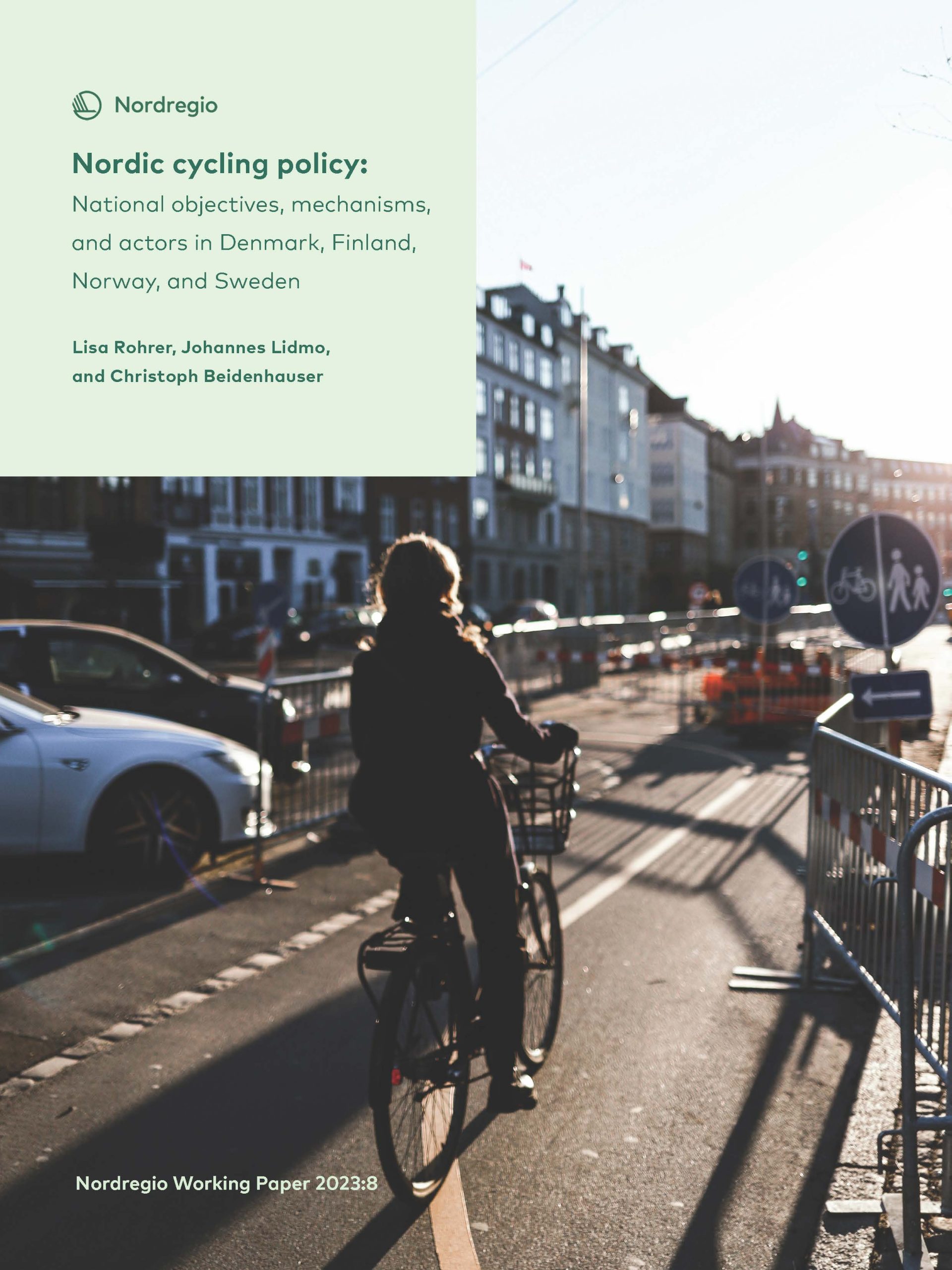This working paper is a part of the Nordic Cycling Power Network, a 2-year project running from February 2023 to January 2025. The key aim of the project is to activate a knowledge-sharing network among municipal and regional planners working for better cycling conditions.
The paper reviews how Nordic countries are working to improve cycling via policy and planning. It takes a national-level approach to review cycling objectives in Denmark, Finland, Norway, and Sweden, analyses a range of mechanisms to achieve these objectives, and identifies the key actors responsible for carrying out the work.
In the discussion section, the paper identifies several findings from the review work with regards to how the Nordic countries are currently addressing cycling at the policy level:
- Cycling is primarily discussed as a means for contributing to environmental goals, such as GHG emission reductions, but is occasionally discussed as a means for improving health and well-being. Much less policy discourse focuses on economic or other social benefits of cycling.
- The primary method for reducing GHG emissions in the transportation sector focuses on replacing fossil fuel cars with electric-powered vehicles rather than on cycling infrastructure or spatial forms that decrease overall mobility requirements.
- The Nordic countries have some distinctions with regards to how spatial planning is operationalised, which influences how cycling is prioritised and managed.
- Beyond a dedicated cycling strategy, cycling objectives are often baked into other key plans and documents at the national level.
- Achieving national cycling objectives requires clear communication among local, regional, and national actors and across ministries, agencies, and departments, which is often a challenge.
- Political turnover can be a hindrance to gaining support for long-term cycling projects.
- There are many different indicators and ways to measure success for cycling objectives in the Nordic countries.
The paper also highlights some of the developments taking place at the UN and EU levels, making cycling and its potential for improving cities and regions more visible across international policy.








